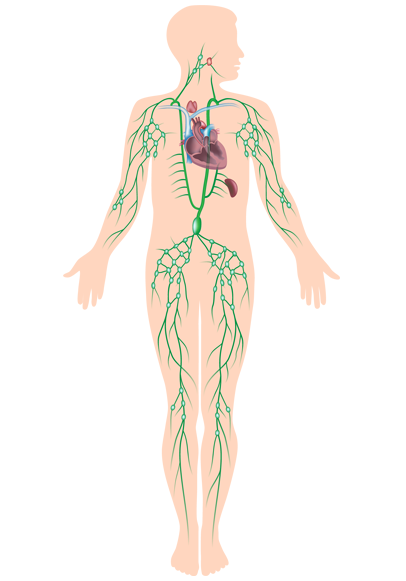Spleen
The word spleen is derived from a Greek word Splen; an organ which is found virtually in all vertebrates with the primary function to filter blood. Spleen holds an important role in regard to Erythrocytes (Red Blood Cells) and the immune system. It holds a reserve of blood which can be helpful during Hemorrhagic Shock and also valuable in recycling of iron.
read moreSpleen
Structure
Human spleen is generally located to the left of the stomach, in upper far left part of the abdomen (Left Hypochondriac Region of Abdominal Cavity) and is protected by the rib cage between 9th and 11th rib. Size and shapes of spleen varies from person to person but generally it is fist shaped and purpled. The adult human spleen is approx 7cm to 14cm in length and usually weighs in between 5.3 ounces to 7.1 ounces.
Blood Supply
For supplying oxygenated blood to spleen a splenic artery branches off from celiac trunk, which is the major branch arising from abdominal aorta. Splenic vein carries away deoxygenated blood from spleen to hepatic portal vein. Soft inner tissue is surrounded by a capsule of tough connective tissue. Inside spleen is a spongy inner tissue containing many tiny blood vessels and hollow sinuses which stores blood.
Development
The spleen’s development is unique as most of gut viscera are endodermally derived whereas spleen is derived from mesenchymal tissue.
Functions
Functionally spleen can be classified into three main areas, each having its own function. The first area is Red Pulp, White Pulp and a marginal zone.
- Red Pulp Region
The function of this region is to mechanically filter red blood cells. It contains several net like reticular fibers which filter worn out red blood cells from the blood flowing through the spleen. For the recycling of iron and protein components of Hemoglobin captured red blood cells are digested.
- Marginal Zone
The zone in between red and white pulp region referred as marginal zone. It acts as a filter for capturing pathogens in blood and passing on of these pathogens to White pulp region.
- White Pulp Region
The function of this region to provide active immunity via Humoral (antibodies) and Cell mediated pathways. It is made up of lymphatic tissues which contain Macrophages, B lymphocytes and T lymphocytes that functions to destroy pathogens in blood and help create antibodies in it.
Less Prominent Functions
- Bone marrow is the primary blood generation site in adults but until fifth month Gestation spleen has most important hematopoietic function
- It can store up to 236.5 ml of red blood cells which are to be released in case of Hypovolemia (decreased blood in body as occurs in shock).
What happens if spleen is removed?
Due to surgical removal spleen, a patient might suffer following:
- Diminished response to some vaccines
- Increased risk of Sepsis (a whole body fatal inflammation by infection)
- Increase risk of mortality from Pneumonia and Ischemic Heart Disease.
Is spleen a vital organ?
Spleen is not a vital organ for body; its functions being useful are still not essential for life. Without spleen other organs like liver, red bone marrow and lymph nodes can healthily continue the filtration and recycling of blood. It’s so fragile, vascular and spongy that its damage is always treated by its removal. However untreated damage can lead to internal loss of blood and sometimes death.
Report Error



